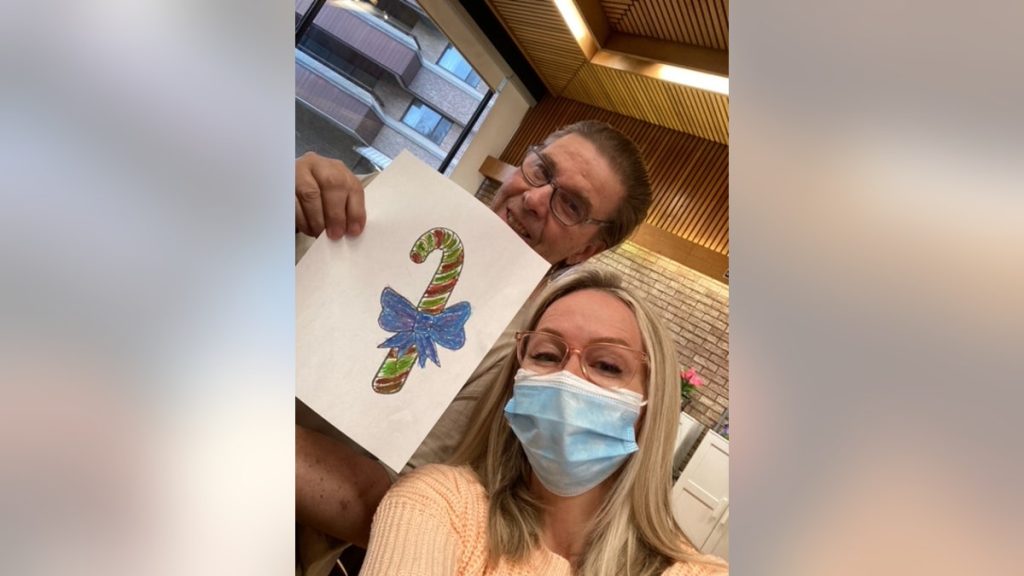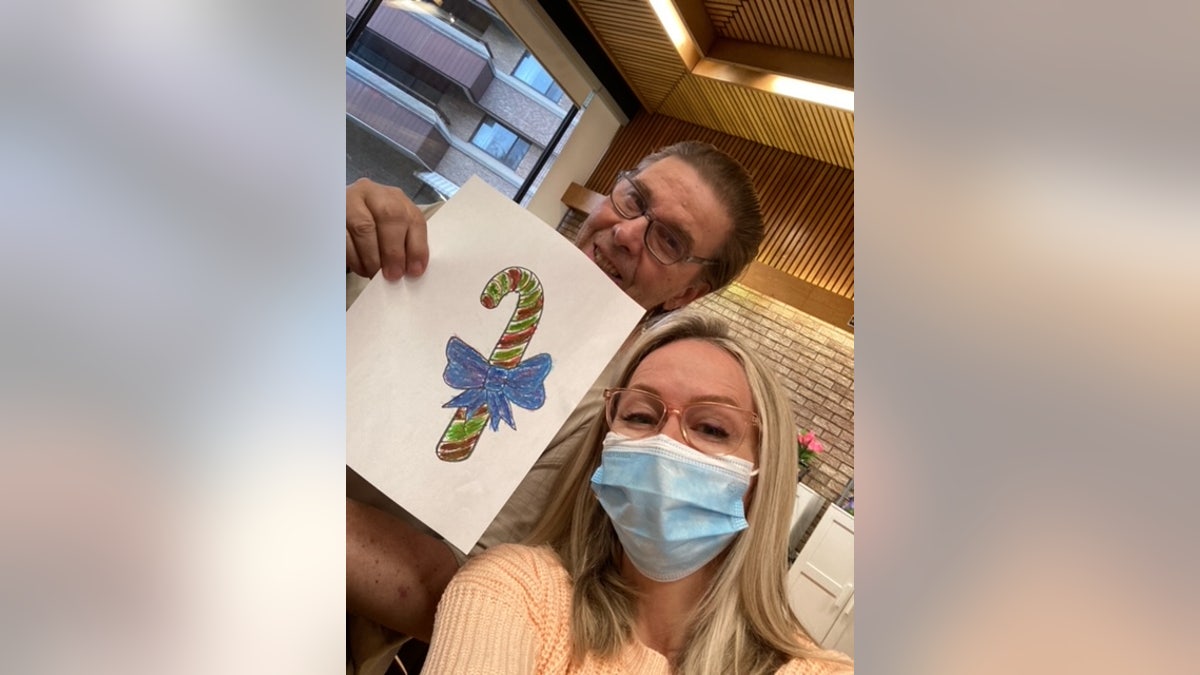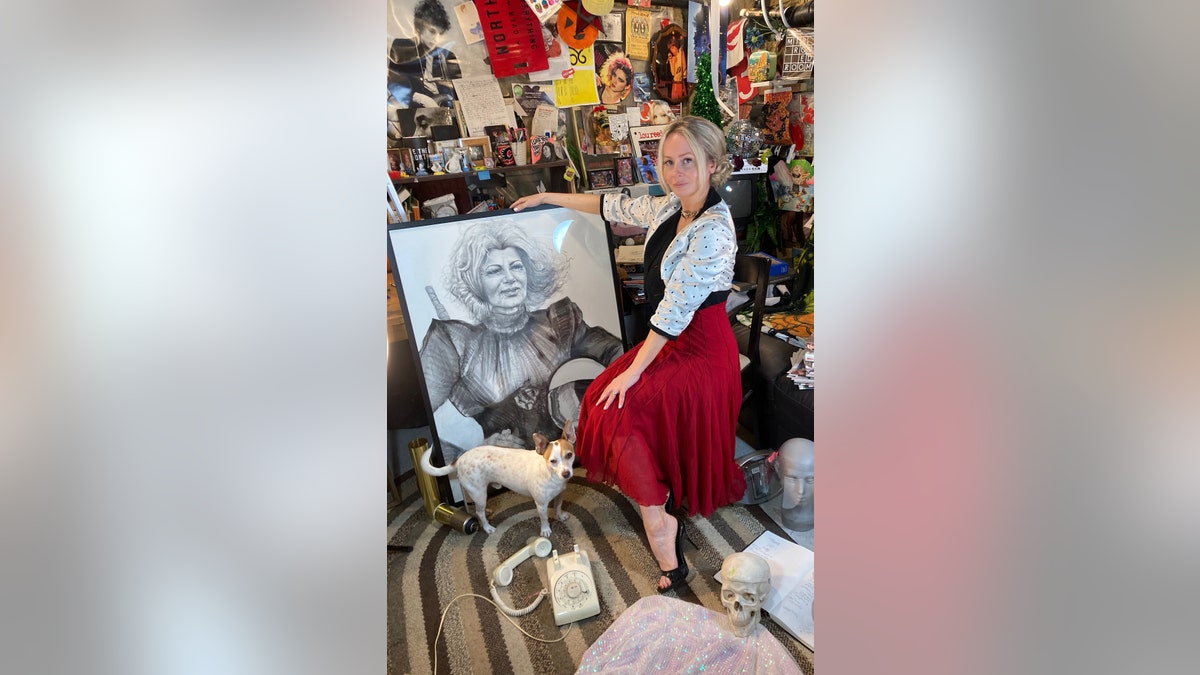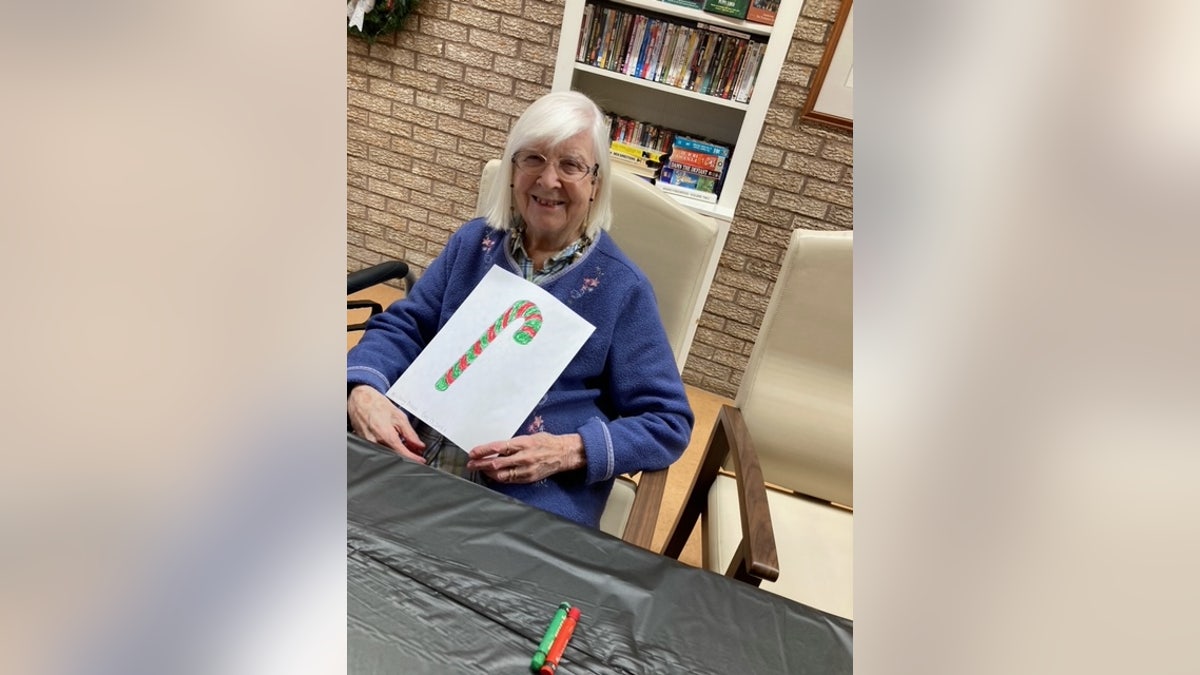
For many aging seniors, memories are precious and fleeting. Now, one Canadian artist is helping some of them capture their favorite scenes in lasting works of art.
Erin Finley is an award-winning artist who teaches at OCAD University in Canada. She’s the creator of Memory Drawing, a program that helps older adults tap into their memories and express them in vibrant color.
Each month, Finley visits a large long-term care facility in Toronto, where she guides residents through the process of creating unique pieces through drawing, coloring and painting.
PICKLEBALL HELPS BOOST SENIORS’ MENTAL HEALTH, OFFERING ‘ADAPTABILITY AND ACCESSIBILITY,’ SURVEY FINDS
The residents range from intrepid, seasoned artists to beginners who are a bit nervous at first, Finley told Fox News Digital in a video interview.
Regardless of their skill level, there’s a lot to gain from the sessions, she said.

Finley is pictured with one of the artists she works with at the long-term care center. Each week, she visits a long-term care facility in Toronto, where she guides residents through the process of creating their own unique pieces. (Erin Finley)
“I love that they all bring their own life experiences and their own bodies of work that they develop through memory drawing activities,” she said.
Finley first got the idea for Memory Drawing during the COVID-19 pandemic, when she saw “heartbreaking images” of people in long-term care facilities who couldn’t be with their loved ones.
MOST SENIORS IN AMERICA CAN’T AFFORD NURSING HOMES OR ASSISTED LIVING, STUDY FINDS
“I thought, ‘What can I do? I’m not in health care, but I want to do something,'” she said.
The artist started contacting local facilities pitching her idea — and the program was born.
‘Self-guided and eager’
For each session, Finley brings some prompts for those who need a little more direction — but she pointed out that some of the seniors are “very self-guided and eager to tap into their own imaginations.”
Seasonal elements are a popular prompt. In the fall, for example, Finley encourages the seniors to think about the crinkly sound of leaves, the changing colors and the trees moving in the wind.
In spring, they might create art based on their favorite flowers.

One of the artists at the senior center shows off her artwork at left. At right, Finley is pictured in her art studio. (Erin Finley)
As they draw and paint, the group talks about the memories that inspired their work, which often involve favorite people, places and things, Finley said. Sometimes an artist brings a photo of a beloved person or object to recreate.
One of the artists is a Corvette enthusiast, for example — so he creates art inspired by the memories of cars he drove and loved as a young man.
CAN YOU REDUCE ALZHEIMER’S RISK BY SEEING A HEALTH COACH? COGNITIVE STUDY SUGGESTS IT’S POSSIBLE
For residents with cognitive decline, Finley said the art sessions can help spark and sharpen memories, particularly when the seniors focus on texture or touch.
For one of the artists, Finley usually starts the drawing and lets him finish.

“I love that they all bring their own life experiences and their own bodies of work that they develop through memory drawing activities,” Finley said. She’s shown here working with a group of artists. (Erin Finley)
“I’ll draw half of a maple leaf and he draws the other half,” she said. “It adds an interactive component.”
Overall, she said she tries to “be nimble” and “give the residents what they need and what brings them joy.”
‘So inspired’
Finley said she is constantly inspired by the creativity the seniors exhibit.
“One of the artists takes watercolor paint, which is a dry medium, adds water to it and paints with his thumb,” she said. “The end result looks like a beautiful oil painting.”
“It’s uplifting for me. It makes me feel like I’m making a difference and helping in some regard.”
“The ingenuity is just mind-boggling, and I’m so inspired by it every time I visit.”
As each piece is completed, Finley presents it to the group and celebrates the accomplishment.
“I might lift up the work and say, ‘This is what Lester has done today.’ And then we have a kind of cool gallery moment and we celebrate.”
SENIORS WITH DEMENTIA ARE TREATED TO ‘BABY SHOWER’ WITH DOLLS TO HELP RELIEVE STRESS: ‘SENSE OF PURPOSE’
One of the residents is deaf, Finley said, and so the individual communicates only through drawing.
“She’ll pass me an image and I’ll pass one back — it’s beautiful.”
The finished pieces are sometimes displayed in the nursing home or given to loved ones.
“Sometimes they are kind of understood to be legacy pieces, so when a family member passes on, they become the prized belongings of the adult children and the remaining family,” Finley told Fox News Digital.

Finley is shown in her art studio displaying one of her creations. An award-winning artist, she teaches at OCAD University in Canada. (Erin Finley)
“This can be a difficult time for some of the adult children of the seniors I work with, but I get to go in and help them access these memories and create something wonderful for them to enjoy.”
Beyond helping the seniors tap into their own memories, Finley said she herself has also benefited.
“It’s uplifting for me,” she said. “It makes me feel like I’m making a difference and helping in some regard.”
“Engaging in artistic activities stimulates certain areas of the brain, helping to keep the mind sharp and active.”
There is also a community-building aspect to the Memory Drawing project, Finley noted, as it brings people out of their isolated spaces and into a collaborative, creative environment for the 90-minute sessions.
“The residents are socializing with each other more than they might have before,” she said. “While enacting a painting, we have conversations that are outside the realm of their regular daily routines.”
Looking ahead, Finley hopes to expand her program to include more nursing homes.
“Maybe the next phase will be enlisting specific artists to be instructors and hold art encounters,” she said.
Benefits of art for seniors
Dr. John Whyte, a practicing physician in Washington, D.C., and chief medical officer of WebMD, shared with Fox News Digital some of the mind-boosting benefits of art for older adults.
“Engaging in artistic activities stimulates certain areas of the brain, helping to keep the mind sharp and active,” he said. “This mental stimulation may delay the onset of cognitive decline associated with aging.”

In terms of cognitive health, a doctor noted that artistic activities stimulate neuroplasticity, which is the brain’s ability to reorganize itself by forming new neural connections. (Erin Finley)
Creating art can also improve seniors’ motor skills, he noted.
“Artistic activities require fine motor skills and hand-eye coordination, which can maintain or improve these abilities in seniors,” said Whyte. “Those skills are important for the activities of daily living.”
Art also encourages emotional expression, he noted, which is especially beneficial for seniors who may face social isolation or emotional challenges.
10 TIPS TO LIVE TO BE 100: ‘FAR MORE THAN WISHFUL THINKING,’ SAY LONGEVITY EXPERTS
“The act of creating art can be therapeutic and meditative, reducing stress and promoting a sense of calm and relaxation,” Whyte said.
In terms of cognitive health, the doctor noted that artistic activities stimulate neuroplasticity, which is the brain’s ability to reorganize itself by forming new neural connections.
“Art projects require attention to detail and concentration.”
Creating art can also trigger memories and stimulate storytelling, he said, “aiding in the recall of past events and strengthening memory pathways.”
CLICK HERE TO SIGN UP FOR OUR HEALTH NEWSLETTER
The activity also builds the ability to focus, Whyte said.
“Art projects require attention to detail and concentration, which can enhance these cognitive abilities in seniors.”

Finley is pictured in her art studio. “The ingenuity is just mind-boggling, and I’m so inspired by it every time I visit,” she said of her Memory Drawing project. (Erin Finley)
The very act of recalling and capturing memories can have an array of benefits, even if those recollections aren’t always accurate, Whyte pointed out.
“This activity can be a powerful tool for reminiscence therapy, helping seniors with memory loss to connect with forgotten experiences,” he said.
CLICK HERE TO GET THE FOX NEWS APP
“Reflecting on personal history through art also helps seniors maintain a sense of self and personal identity, which can be particularly important in battling conditions like dementia or Alzheimer’s.”
For more Health articles, visit www.foxnews.com/health.

 Latest Breaking News Online News Portal
Latest Breaking News Online News Portal




